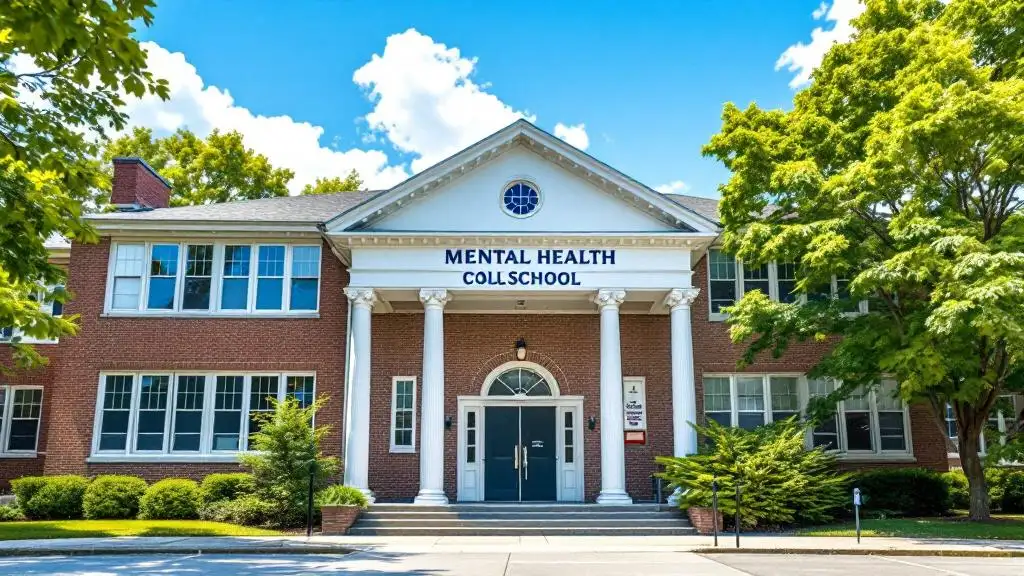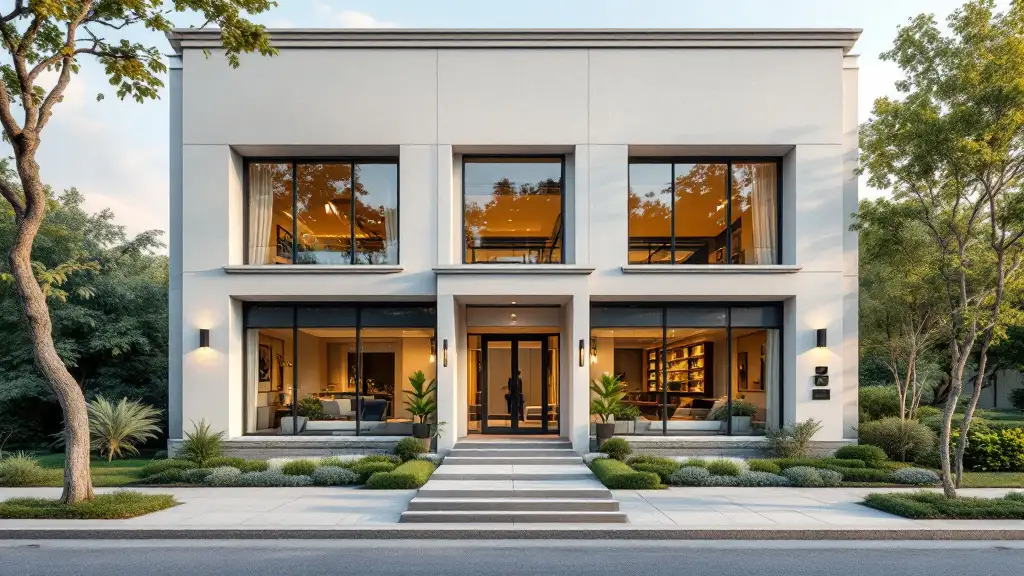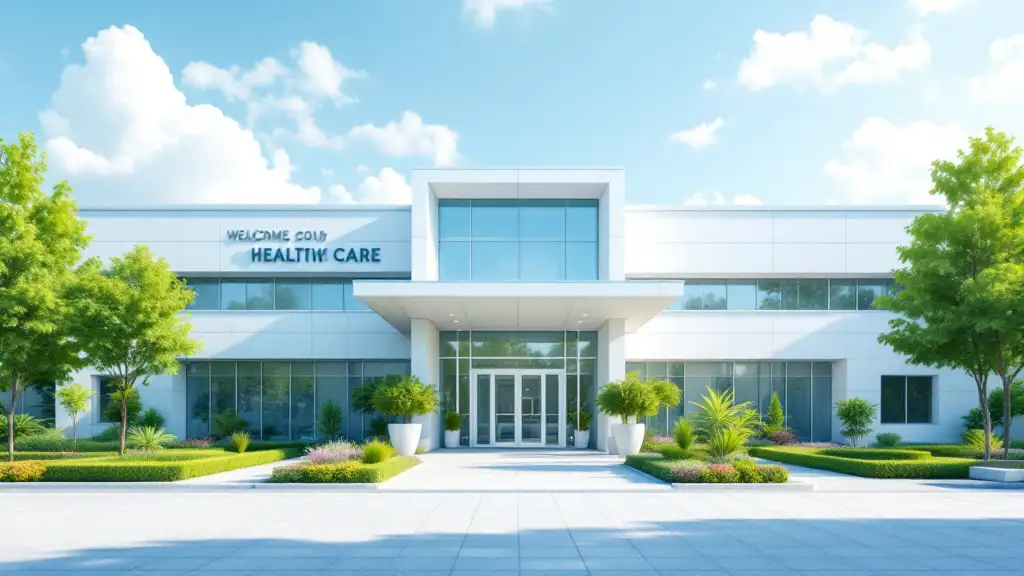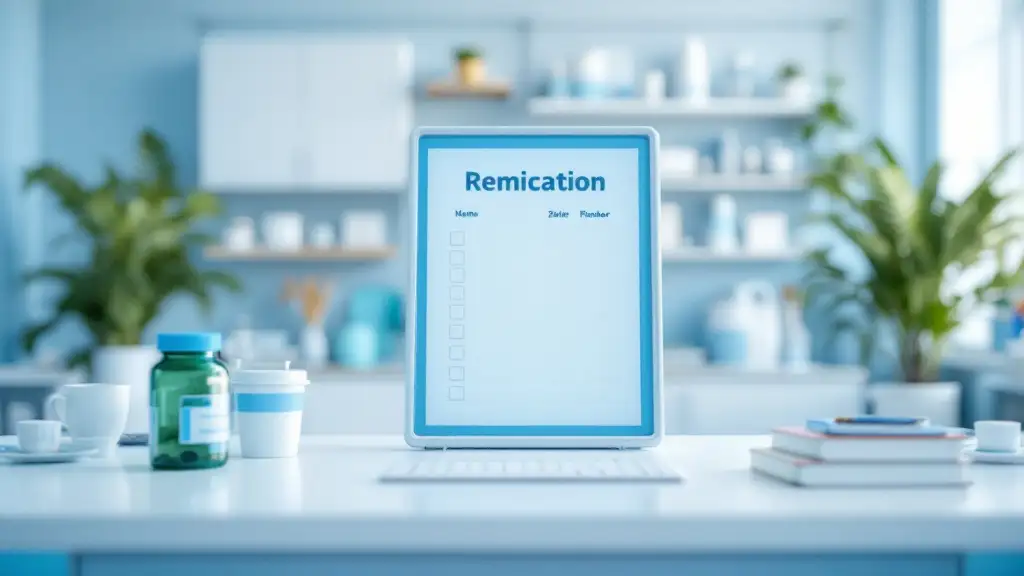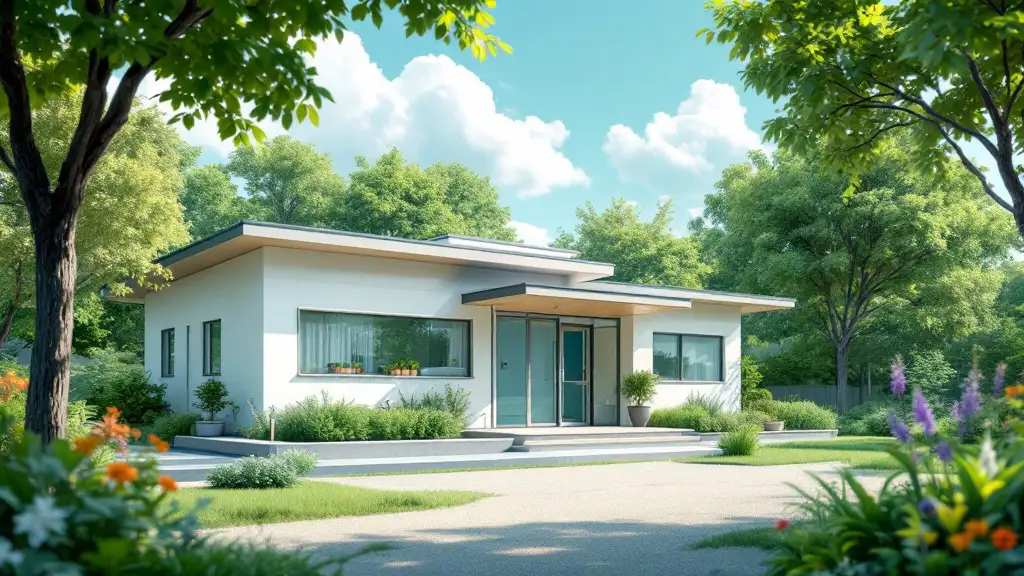Exploring the Focus on Age in Group Therapeutic Settings
Group therapy is a widely utilized therapeutic approach that involves multiple clients engaging in facilitated sessions aimed at emotional and psychological growth. A critical consideration in the effectiveness of these groups is whether they are designed to be age-specific or inclusive of all ages. This article delves into the structure, practices, and benefits of age-specific group therapy, highlighting how tailoring sessions by age can optimize outcomes for different populations and stages of life.
Principles and Practices of Group Therapy
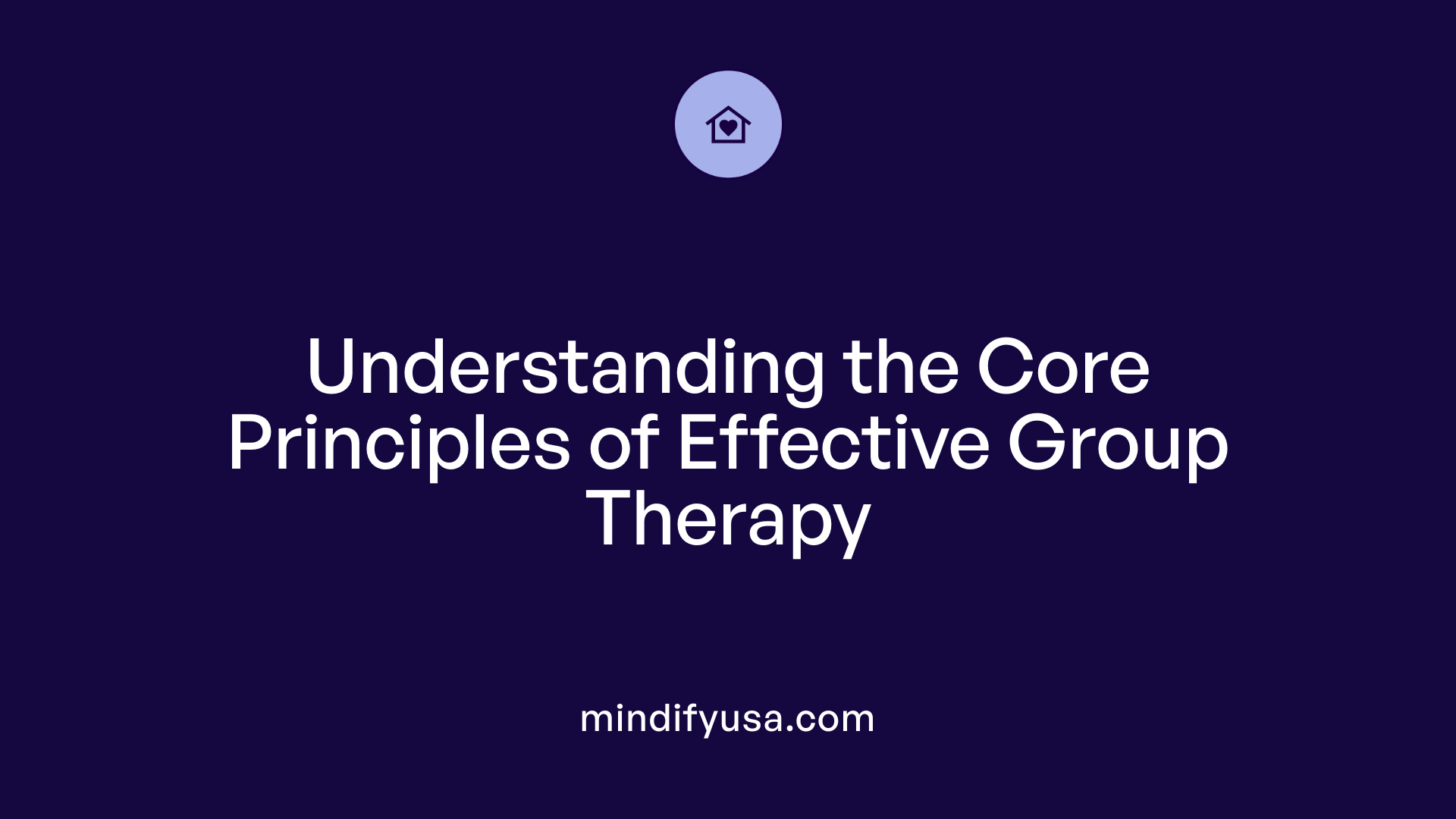
What are the main principles and practices of group therapy?
Group therapy is a form of psychological treatment where one or more trained therapists work with a small group of individuals—usually between 5 to 15 members—simultaneously. The goal is to promote personal growth, emotional support, and healing through shared experiences and interpersonal interactions.
Core principles of effective group therapy, as described by Irvin Yalom, include fostering hope among members, encouraging a sense of universality—helping individuals realize they are not alone in their struggles—, and developing strong group cohesion. These elements work together to create a safe environment for honest sharing and personal development.
Different theoretical frameworks inform how group therapy is conducted. Psychodynamic approaches look at underlying unconscious processes and family dynamics, while cognitive-behavioral models focus on changing thought patterns and behaviors. Humanistic perspectives emphasize personal growth and self-actualization, and existential therapies explore meaning and purpose.
Practices within group therapy involve establishing structure and clear objectives, setting boundaries, and defining the roles of both members and the therapist. Techniques such as sharing personal stories, role-playing, and providing constructive feedback help deepen emotional expression and foster learning.
The process is dynamic, typically moving through stages such as formation, storming, norming, performing, and eventual termination. Throughout these phases, the therapist's role includes managing group relationships, encouraging trust, addressing conflicts, and supporting members in developing skills relevant to their issues.
Overall, group therapy leverages the power of social interaction and collective support to facilitate symptom relief, improve social skills, reduce feelings of isolation, and challenge dysfunctional family or social patterns. Its multifaceted approach offers a comprehensive pathway for emotional and behavioral change, making it a versatile and effective form of mental health treatment.
Leadership and Structure of Group Sessions
 Who typically leads a group therapy session?
Who typically leads a group therapy session?
A group therapy session is usually led by a trained mental health professional such as a licensed psychologist, psychiatrist, social worker, or certified group psychotherapist. These leaders possess specialized skills in facilitating group interactions, managing dynamics, and fostering a safe environment for sharing.
The responsibilities of facilitators are crucial for the success of the group. They are responsible for maintaining safety by establishing clear rules and boundaries, ensuring confidentiality to protect members’ privacy, and guiding discussions effectively. Facilitators also monitor group cohesion, invite participation, and address any conflicts or resistance that arise during sessions.
Group therapy can be conducted in various formats. Often, sessions are led by one or two facilitators to ensure appropriate management of the group’s activities and emotional climate. These facilitators can conduct in-person meetings or virtual sessions, adapting their approach based on participants' needs.
Both individual and joint leadership models are common, especially when addressing complex issues or working with sensitive populations such as children, adolescents, or older adults. Regardless of the setup, the leader’s role is to create an environment conducive to openness, trust, and personal growth, ensuring that each session proceeds smoothly and productively.
| Facilitator Qualifications | Responsibilities | Session Formats |
|---|---|---|
| Psychologists, psychiatrists, licensed social workers | Ensure safety, maintain confidentiality, guide group dynamics | In-person, virtual |
| Trained therapists or psychotherapists | Model appropriate behavior, manage conflicts | One or two facilitators, sometimes co-led |
| Certified group psychotherapists | Foster emotional support, build trust among members | Ongoing or structured sessions |
| Support personnel may assist | Enforce rules, support facilitators | Single or multiple facilitators |
Proper training and experience are vital to handle the diverse needs of group members, facilitate effective therapeutic processes, and adapt to different formats. The facilitator’s expertise directly correlates with the group’s success in promoting positive change and emotional well-being.
Age-Specific Group Therapy: The Concept and Its Rationale

What is age-specific therapy, and what are its targeted age ranges?
Age-specific group therapy is a tailored approach that groups individuals based on their age, typically within a certain developmental stage or life phase. These groups are designed for specific age ranges such as children (ages 5-10), adolescents (ages 13-17), young adults, adults, and older adults. For example, therapy programs at Moonridge Academy target children aged 12 to 15, providing a safe environment with a lower student-to-staff ratio and age-appropriate activities.
Similarly, programs for youth generally cover ages 8 to 17, structured as 8- to 10-week sessions including check-ins, skill-building, and family participation. Gerontological studies also support age-specific groups for older adults, often designed to address issues like cognitive decline, depression, and social isolation. These groups are carefully structured to meet the unique psychological, social, and physical needs of each age group.
Why is group therapy structured around age, including developmentally appropriate content and safety considerations?
Structuring groups by age helps create developmentally appropriate content and ensures that activities and discussions resonate with participants’ life stages. Younger children, for example, benefit from play therapy and activities that foster emotional expression through art or play, facilitating better engagement.
Adolescents and teens tend to feel more comfortable sharing in groups of peers closer to their age, aiding honesty and openness. It also helps prevent intimidation or discomfort that may arise from disparities in maturity levels.
For older adults, age-specific groups allow addressing issues like cognitive impairment and health concerns, providing a supportive environment where participants share experiences related to aging. These considerations promote safety, respect, and relevance, which are crucial for effective therapy.
How do group formation, activities, and content differ for children, adolescents, adults, and elders?
Children:
- Usually participate in play therapy, art, or experiential activities.
- Focus on emotional regulation, social skills, and behavioral challenges.
- Sessions are shorter, more engaging, and often incorporate family involvement.
Adolescents:
- Discussions may involve issues like identity, peer relationships, academic stress, and mental health.
- Use of experiential techniques like art, outdoor activities, or social skills workshops.
- The environment fosters honesty and peer support.
Adults:
- Focus on managing stress, relationships, and life transitions.
- Content often involves psychoeducation, cognitive-behavioral strategies, and support.
- Sessions last about an hour, with a broader range of topics.
Older Adults:
- Address cognitive health, emotional well-being, and social connectedness.
- Use of reminiscence therapy, cognitive exercises, or social activities.
- Group size and format adapted to physical and cognitive abilities.
| Age Group | Typical Activities | Focus Areas | Format & Considerations |
|---|---|---|---|
| Children | Play, art therapy | Emotional expression, social skills | Short, engaging, often with family involvement |
| Adolescents | Peer discussions, outdoor activities | Identity, peer relations, mental health | Peer close groups, expressive methods |
| Adults | Psychoeducation, skill-building | Stress, relationships, life transitions | 1-hour sessions, broad topics |
| Older Adults | Cognitive exercises, reminiscence | Mood, cognitive health, social connection | Adapted environment, support-focused |
Overall, age-specific therapy groups are designed to optimize engagement, safety, and relevance. They foster developmentally suited interventions, enabling participants to connect deeply and benefit fully from shared experiences in a supportive environment.
Tailoring Group Content to Developmental Stages
Group therapy is customized to meet the developmental needs of various age groups, ensuring that activities and therapeutic strategies are both appropriate and effective.
For children, therapy often employs play and experiential methods such as art therapy, sand tray therapy, and outdoor activities. These approaches help young clients express their feelings and develop social skills in a non-threatening environment. Sessions may include creative projects or physical activities aimed at fostering emotional regulation and social interaction.
Adolescents benefit from discussion-based and skill-building groups designed to address issues like identity, peer relationships, and emotional regulation. Activities might feature role-playing, group exercises, and experiential learning to promote self-awareness, interpersonal skills, and resilience.
Older adults are typically engaged in therapies like reminiscence, cognitive-behavioral techniques, or supportive group conversations that focus on mood, memory, and social connection. These sessions help foster a sense of purpose and combat loneliness, often incorporating activities such as storytelling, cognitive exercises, and shared experiences tailored to their cognitive and physical abilities.
Understanding and respecting the distinct needs of each developmental stage, therapists structure groups with appropriate activities, a suitable number of participants, and target age ranges. For children, groups usually involve ages 5-10, focusing on foundational social skills. Teen groups generally target ages 13-17, supporting identity exploration and emotional growth. Adult and older adult groups consider cognitive and physical capabilities, fostering engagement through relevant, adaptable approaches.
Overall, effectively tailoring group therapy content by age enhances engagement, encourages participation, and leads to better therapeutic results. By aligning activities with developmental levels, therapists help participants feel understood and supported, making the journey toward emotional well-being more accessible for all age groups.
Impact of Age on Group Dynamics and Outcomes
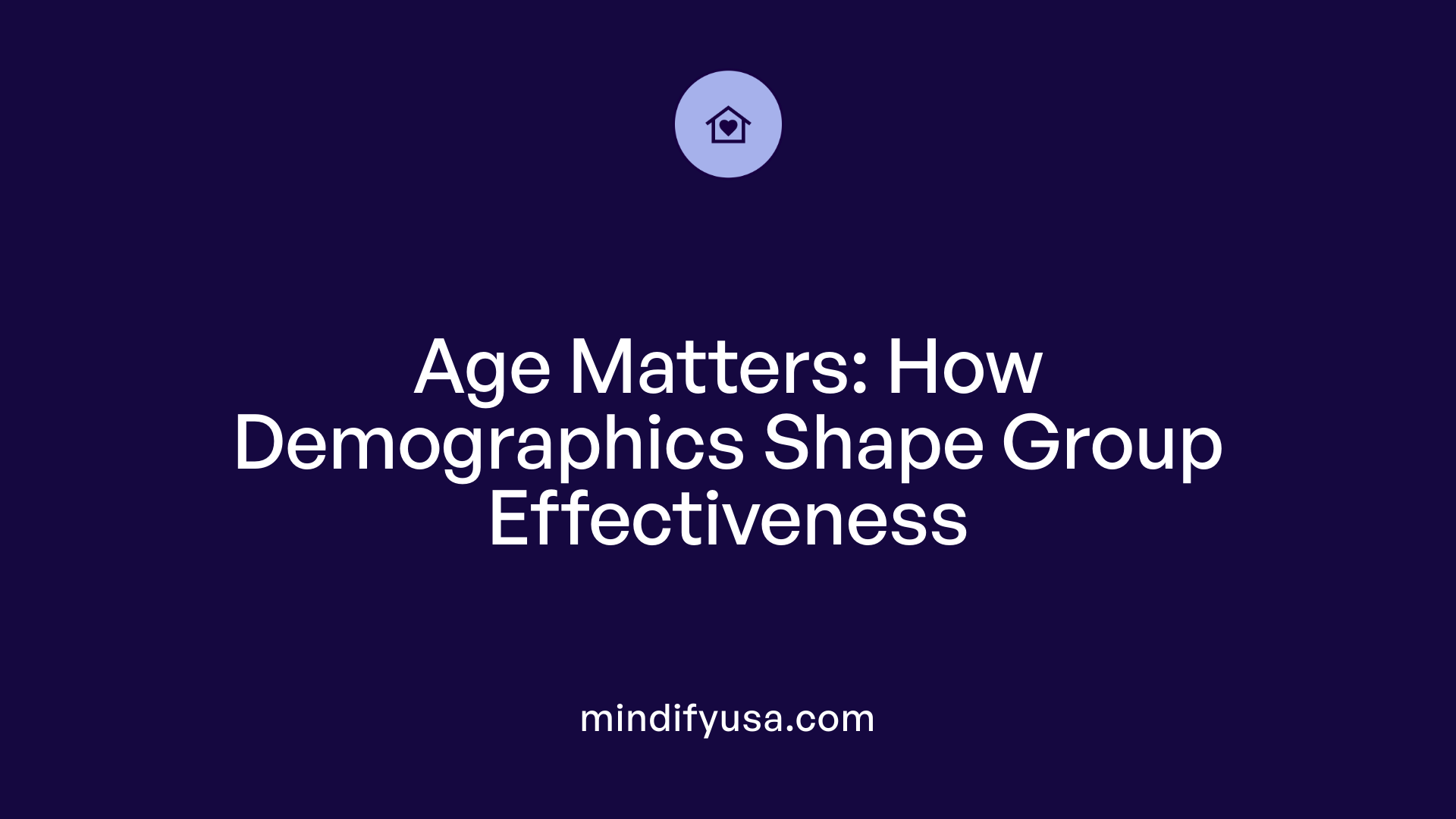
How does age homogeneity influence cohesion and effectiveness?
Age homogeneity in group therapy significantly affects both cohesion and the overall effectiveness of the treatment. When group members are similar in age, they tend to share common developmental experiences, cultural references, and life challenges. This shared background fosters a sense of understanding, belonging, and trust, which are crucial for open communication and emotional safety. For example, groups composed of adolescents are more effective when members are within a narrow age range, typically no more than three years apart. Such proximity allows participants to relate more closely and feel less intimidated by older or younger peers.
Conversely, mixed-age groups might face challenges with cohesion due to differing maturity levels and life stages, which can hinder open discussion and mutual support. Therefore, many programs carefully structure groups to ensure age-appropriate content and dynamics, boosting group cohesion and outcomes.
What is the role of age in content relevance, engagement, and safety?
Age plays a vital role in tailoring content, activities, and discussion topics within therapy groups. Younger children benefit from play therapy and experiential methods aligned with their developmental stage, fostering comfort and engagement. Adolescents, on the other hand, are better served through discussions on identity, peer relationships, and emotional regulation, using age-appropriate language.
Safety is also enhanced when group members are within a similar age range, reducing intimidation and encouraging honest sharing. For example, older teens may feel more comfortable expressing their feelings in a group with peers who face similar life challenges. Additionally, therapists trained for specific age groups can better manage group dynamics, address developmental issues, and create environments conducive to growth.
What do research findings suggest about age-specific benefits and outcomes?
Research supports the benefits of age-specific group therapy. For children aged 8-17, structured programs like those at Moonridge Academy show improved emotional regulation, decreased anxiety, and better coping skills when therapy is tailored to their developmental needs. These groups typically meet multiple times weekly and focus on age-appropriate issues such as bullying, self-esteem, and trauma.
Older adults also benefit from group therapy designed with their cognitive and social needs in mind. Studies indicate that properly structured geriatric groups can alleviate depression, improve social functioning, and delay cognitive decline. For instance, cognitive-behavioral therapy in older populations reduces symptoms of late-life depression and enhances quality of life.
Overall, age-specific group therapy enhances engagement, safety, and therapeutic outcomes, making it a critical consideration in designing effective mental health interventions.
| Aspect | Effect | Example/Details |
|---|---|---|
| Group cohesion | Increased when members share similar age and experiences | Adolescents in age-matched groups foster trust and openness |
| Content relevance | Age-appropriate topics lead to better engagement | Youth groups address bullying; adult groups cover life transitions |
| Safety and comfort | Similar age reduces intimidation | Children and teens open up more within age-specific settings |
| Therapeutic outcomes | Improved with tailored approaches | Decreased depression in older adults; better social skills in younger groups |
| Research backing | Consistent evidence for age-specific benefits | Programs like Moonridge Academy and geriatric therapies show positive results |
This structured focus on age ensures that group therapy remains effective and meaningful for all participants, acknowledging the importance of developmental and emotional stages in the healing process.
Effectiveness and Outcome of Age-Adjusted Groups
What are the benefits of group therapy?
Group therapy provides a unique and supportive environment where individuals facing similar challenges can come together to share their experiences and support each other. This reduces feelings of loneliness and isolation, helping participants understand they are not alone in their struggles. Through honest feedback and interpersonal learning, group therapy enhances social skills and self-awareness, fostering healthier relationship patterns.
Led by trained professionals, such as psychologists or licensed therapists, it effectively addresses issues like depression, anxiety, trauma, and substance abuse. The format is often cost-effective and accessible, making it available to a broad population. Additionally, the diverse perspectives within the group can offer new insights and coping strategies, promoting personal growth.
Overall, group therapy normalizes emotional suffering and acts as a powerful tool for mental health improvement, community building, and developing resilience.
How do outcomes compare between age-specific and mixed-age groups?
Research demonstrates that age-specific therapy groups tend to produce better engagement and participation rates among members. When participants are grouped with peers of similar ages, they often feel more understood and less intimidated, leading to increased openness and honesty.
Studies comparing age-specific groups with mixed-age groups reveal that younger participants, especially adolescents, benefit from discussing issues relevant to their developmental stage. Older adults, similarly, engage more effectively in groups tailored to their life experiences. These tailored groups help address age-related themes, such as identity in youth or loss and cognitive changes in seniors.
Mixed-age groups can sometimes hinder participation, especially among adolescents or vulnerable populations, due to generational differences or discomfort.
What are the advantages of age-aligned therapy groups?
Aligning therapy groups by age offers significant benefits in terms of engagement, safety, and relevance. Participants are more likely to relate to others' experiences, which promotes trust and openness.
Such groups also create a safe space where members feel less judged and more willing to share sensitive topics. Age-specific groups improve the relevance of discussions, ensuring that the issues addressed are appropriate to the developmental stage. For adolescents, this might mean focusing on peer relationships and identity; for older adults, health management and grief might be prioritized.
Therapists are better equipped to tailor interventions and materials to their specific age group, which increases the effectiveness of the therapy. Consistent group membership across sessions fosters cohesion, leading to better therapeutic outcomes.
| Age Group | Main Focus | Typical Duration & Format | Benefits |
|---|---|---|---|
| Children (5-10 years) | Play therapy, basic skills | Short sessions, involving play and activities | Engagement, emotional expression |
| Teenagers (13-17 years) | Peer support, identity, coping | Weekly sessions, age-appropriate topics | Openness, identity exploration |
| Young Adults | Mental health, substance use | Longer-term, tailored interventions | Relevance, motivation |
| Older Adults (65+) | Cognitive health, mood | Group activities, reminiscence, support groups | Social connectedness, reduced loneliness |
Research supports the use of age-specific group therapy as an effective intervention across various populations, improving participation, relevance, and therapeutic outcomes.
Implementing Rules and Conduct Guidelines
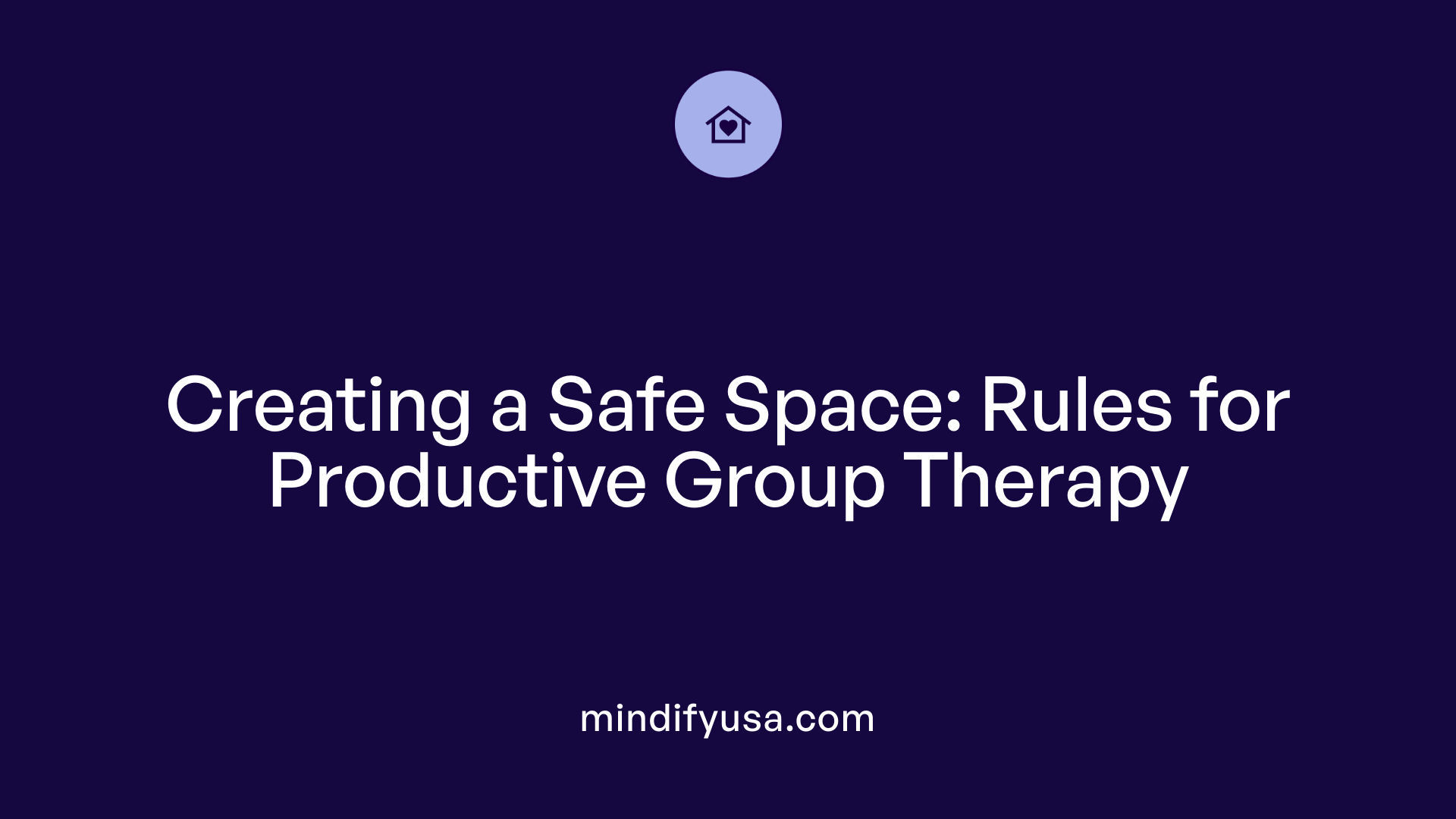
What are the typical rules and guidelines for conducting effective group therapy sessions?
Effective group therapy depends on establishing clear rules that create a safe and supportive space for all members. Typically, these guidelines emphasize maintaining confidentiality, respecting others' opinions, and participating actively without judgment.
Members should commit to attending sessions on time and avoid substances like alcohol or drugs that could impair their participation. Refraining from outside social relationships within the group helps preserve focus and trust.
The therapist plays a pivotal role in discussing and enforcing these rules, which should be introduced early on and reviewed regularly. Adaptations may be necessary as the group evolves to ensure ongoing relevance.
Adhering to these standards encourages trust, fosters cohesion, and facilitates open communication. These factors are essential for maximizing the therapeutic benefits, helping individuals feel secure enough to share and grow in a group setting.
The Significance of Age-Sensitive Group Therapy Models
In conclusion, while group therapy can be designed to be inclusive of all ages, many therapeutic settings deliberately structure sessions as age-specific to maximize relevance, safety, and engagement. Tailoring groups by developmental stage allows therapists to utilize appropriate content, activities, and facilitation techniques, ultimately improving outcomes across diverse populations. Recognizing the importance of age considerations not only fosters a more comfortable environment but also enhances the therapeutic process, making age-specific group therapy a vital approach within mental health services.
References
- Group Therapy - StatPearls - NCBI Bookshelf
- Group interventions - PMC
- Group Therapy Rules for Kids - Hazelden Betty Ford Foundation
- What Types of Group Therapy Are Offered? - Revel Miller, Ph.D.
- Chapter 16 – Group Sessions | Adolescent Trauma Training Center ...
- What to Expect at Group Therapy
- Age Specific Treatment - Moonridge Academy












